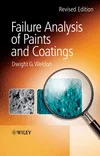Atlas Offers 63 Years of UV Exposure in One Year
CHICAGO - Atlas Material Testing Technology is introducing the latest technology for ultra-accelerated exposure testing. This new outdoor testing device can provide approximately 63 years of South Florida UV radiation exposure in a single year. Atlas developed this new solar concentrator technology in partnership with the National Renewable Energy Laboratory (NREL) and the Russian Institute of Laser Optical Technology (ILOT) under a U.S. Department of Energy (DOE) program.
Similar in concept to Atlas' moderately accelerated EMMA® technology, the ultra-accelerated device tracks the sun while concentrating reflected sunlight on test specimens mounted in a target area. However, the new patented mirror system used in the ultra-accelerated concentrator has very high reflectance in the UV and near visible wave length ranges, while attenuating reflectance in the longer wavelength visible and IR portions of the solar spectrum. This technology allows for very high concentrations of UV energy without excessive heating of test samples.
Building high irradiance solar concentrators or laboratory solar simulators for durability testing appears straightforward. However, such devices at ultra-high irradiances typically cause overheating of test samples, resulting in unnatural material changes compared to the changes in the end-use environment. Atlas' new technology, on the other hand, simultaneously achieves three requirements critical for ultra-accelerated exposure testing: exposes many different types of materials to ultra-high UV irradiances, maintains high fidelity to the natural solar UV spectrum and maintains specimens at acceptable exposure temperatures
Using multiple focusing mirrors arranged on the curve of a 10-meter sphere, the UV energy may be variably concentrated on a target area approximately 10cm X 10cm. Custom mounting and cooling can be added depending upon specific material exposure requirements. Optically the mirror system has a direct normal 100/1 concentration factor.
Materials and products that represent good candidates for testing are: materials that require a long service life, transparent and glazing materials, small solar PV cells or material used in these cells, coatings applied to metal panels, and materials that perform well in EMMA or EMMAQUA® exposure testing.
Looking for a reprint of this article?
From high-res PDFs to custom plaques, order your copy today!







